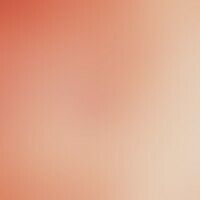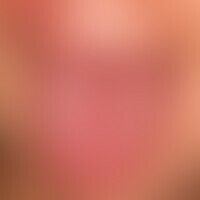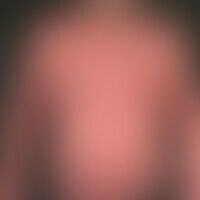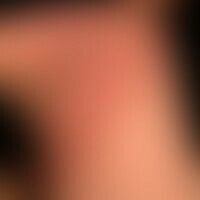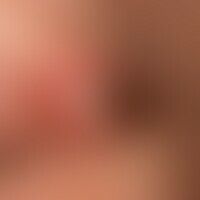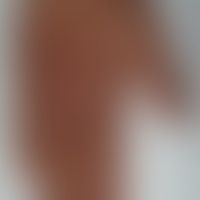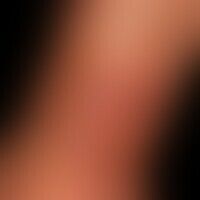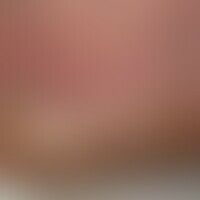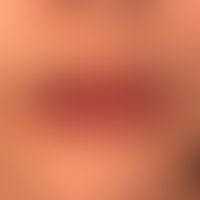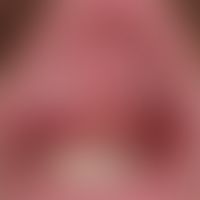Image diagnoses for "red"
877 results with 4458 images
Results forred
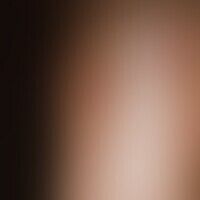
Lichen planus bullosus L43.10
Lichen planus bullosus: Multiple, solitary, vesicularly transformed red nodules on the lower leg in a 55-year-old man with lichen planus.
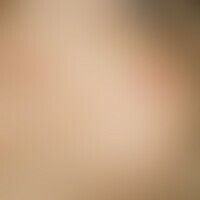
Prurigo simplex acuta L28.22
Prurigo simplex acuta infantum: Disseminated, very itchy, inflammatory papules and papulovesicles on the face in a child.
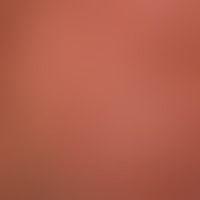
Folliculitis barbae L73.8
Folliculitis barbae: Massive purulent (ostio-)folliculitis after application of a tyrosine kinase inhibitor.
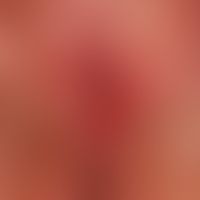
Lichen sclerosus (overview) L90.4
Lichen sclerosus et atrophicus: in addition to the still detectable changes of the lichen sclerosus, blurred, flat, erosive, red, solid plaque on the posterior commissure with spreading to the perineum. Histological evidence of a spinocellular carcinoma.

Cutaneous botryomycosis L98.0
Botryomycosis. less spectacular clinical findings. circumscribed, less painful area with pustules, nodules and extensive induration. the diagnosis was histologically confirmed by evidence of a deep granulomatous inflammation with abscesses and the presence of eosinophilic granules, the so-called Splendore-Hoeppli phenomenon.
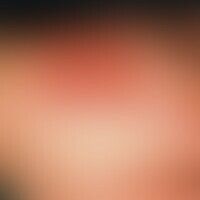
Back of the hand edema, chronic traumatic R60.0

Folliculotropic mycosis fungoides C84.0
generalized clinical picture: surface smooth plaques, which dissect at the edges, with clear evidence of follicular involvement.
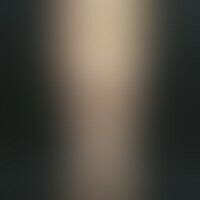
Klippel-trénaunay syndrome Q87.2
Klippel-Trénaunay syndrome. Extensive nevus flammeus; so far no evidence of soft tissue hypertrophy. No pelvic obliquity!
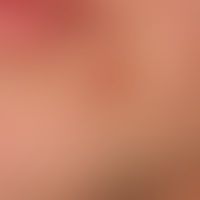
Folliculitis (superficial folliculitis) L01.0
Folliculitis (superficial folliculitis): 33-year-old man; recurrent, single inflammatory follicular papules on the lips, nose and forehead; heals after 10-14 days without scarring.

Melkersson-rosenthal syndrome G51.2

Eyelid dermatitis (overview) H01.11
Seborrhoeic eyelid dermatitis: chronic recurrent, therapy-resistant dermatitis of the eyelids and the adjacent facial areas; the symptoms subside if the patient stays in climatically favoured regions.
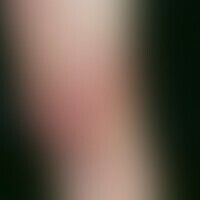
Acrodermatitis chronica atrophicans L90.4
Acrodermatitis chronica atrophicans. 78-year-old female patient with confirmed neuroborreliosis 6 years ago and still positive Borrelia serology. Multiple, chronically inpatient, persisting for 2 years, asymmetrical (only on the left leg), blurred, sometimes burning pain, large, red to red-livid, smooth erythema, partly with crinkled surface (cigarette-paper-like puckering).
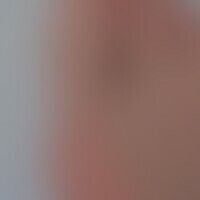
Gout M10.0
Arthritis urica: sudden spontaneously occurring spontaneously and under slight pressure painful (walking is difficult) redness and swelling of the right metatarsophalangeal joint of the big toe Known hyperuricemia
